#jonsnowfortnightevent
Text
#JON SNOW FORTNIGHT EVENT 2023 @asoiafcanonjonsnow
DAY 10: ECHOES OF THE PAST 🗝️📜 (1/2) ->
Historical parallels with Medieval bastard Kings.
Nowadays, ‘bastard’ is used as an insult.
Being born to unmarried parents is largely free of the kind of stigma and legal incapacities once attached to it in Western cultures, but it still has echoes of shame and sin. The disparagement of children born outside of marriage is often presumed to be a legacy of medieval Christian Europe, with its emphasis on compliance with Catholic marriage law.
Yet prior to the 13th century, legitimate marriage or its absence was not the key factor in determining quality of birth. Instead, what mattered was the social status of the parents – of the mother as well as of the father. Being born to the right parents, regardless of whether they were married according to the strictures of the church, made a child seem more worthy of inheriting parents’ lands, properties and titles.
It’s not until the late 12th century that evidence for the exclusion of children from succession on the grounds of illegitimate birth first appears. ‘Bastard’, as we now understand it, began to emerge here.
Importantly, this shift in the meaning and implications of illegitimacy did not arise as an imposition of Church doctrine. Instead, ordinary litigants began exploiting bits of Church doctrine to suit their own ends. Perhaps the earliest signs of this can be found in the annals of English legal history, with the Anstey case of the 1160s. This might have been the first time an individual was barred from inheriting because her parents had married illegally. And it happened not because the Church intervened, but because one clever plaintiff figured out how to exploit some scraps of theological doctrine. After that time, more and more plaintiffs began to do the same.
For example, towards the end of the 12th century, a regent countess of Champagne rushed to make use of an allegation of illegitimate birth against her nieces, in an effort to secure her son’s succession. Daughters could inherit in this region, and so these sisters did have a claim to the county once ruled by their late father. But the regent countess denounced the sisters as the product of an illegal marriage and therefore not legitimate heirs of their father. The strategy worked in that both daughters did eventually renounce their claims to the county, but not without first obtaining a great deal of money, enough to make them both extremely wealthy. As this suggests, the papacy had a far more passive role than is often imagined.
As bastardy began to acquire its modern meaning, in the early 13th century, it remained the case that the papacy focused on the regulation of illicit unions rather than the exclusion from succession or inheritance of those born to illicit unions. Hatred of illicit sex did trump dynastic politics on occasion. Hatred of the children born to such unions did not. There is very little evidence to suggest that an interest in keeping illegitimate children from inheriting noble or royal title outweighed political or practical considerations in the same way that the policing of illegal marriages sometimes did.
Understanding the changing meanings of bastardy helps us to arrive at a clearer picture of the workings and priorities of medieval society before the 13th century. Society then did not operate subject to rigid Christian canon law rules. Instead, it measured the value of its leaders based on their claims to celebrated ancestry, and the power attached to that kind of legitimacy. To be sure, marrying legitimately certainly received a good deal of lip service throughout the Middle Ages. Nevertheless, in this pre-13th-century world, the most intense attention was paid not to the formation of legitimate marriages, but to the lineage and respectability of mothers. Only beginning in the second half of the 12th century did birth outside of lawful marriage begin to render a child illegitimate, a ‘bastard’, and as such potentially ineligible to inherit noble or royal title.
Source
Well, George R.R. Martin has been using real life historical events as an inspiration for creating the lore of A Song of Ice and Fire, more concretely English and Western Late Medieval Europe history for Westeros, and it was precisely in the Late Middle Ages when the legal situation for bastards worsened by reinforcing marriage and legitimacy laws, reinforcing concubinates to disappear and laws to avoid any kind of polygamy.
In Westerosi society there's the stigma that comes from being born as a bastard, they're said to be born from lust, lies, and weakness, and as such, they are said to be wanton and treacherous by nature, and although they could get some prominent position either in the Citadel, the Kingsguard, Night's Watch or the Faith, they are generally discriminated by other Westerosi (except in Dorne, where there's tolerance towards bastards) and they rarely inherit his father's titles nor become kings. In the Asoiaf lore, there's recording of a bastard of a Bracken and a Blackwood, Benedict Waters, who founded the House of Justman and became King of the Trident as Benedict I; as well as Alyn Velaryon, a Velaryon bastard who was legitimised and became Lord of the Tides after The Dance of Dragons.
Till the events of the published books, Jon has reached the position as Lord Commander of the Night's Watch and King Beyond the Wall in all but in name, two positions he has been chosen for.
But he would not have the possibility to inherit any title as Lord of Winterfell and Warden of the North/King in the North as a bastard, unless someone legitimised him, like Robb did in his Will. Jon has the chance of standing as a candidate for the Northern Succession Council after defeating the Boltons.
So, if The North stays away from the Iron Throne, Jon would be a good candidate for Lord of Winterfell and King in The North, but the question is... Is there any historical example of bastards who became kings?
Yes, there are, and in this meta we're going to down through history and remember those kings. This list probably doesn't include all of the bastard kings, just a selection, if you know about some more, feel free to share it.
The most common concept for bastardy is a child born of parents who were not married when the child was born, so firstly we'll list a few kings who are included in that group, as we consider Jon as Eddard Stark's bastard or Rhaegar and Lyanna's.
Their circumstances in which those kings got to throne are diverse, but we'll get into them searching for any simmilarities between Jon's story and their lifes.
Let's start, the list is on chonological order, and we'll notice that after the 13th century the amount of bastard kings is less, like we cited at the beginning of this meta.
8th Century
-> Mauregato I of Asturias (719-788), who reigned during the late 8th century, between 783 and 788, and was the son of Alfonso I of Asturias and a Muslim concubine or servant named Sisalda. He took the throne when the nobility had declared his nephew Alfonso II of Asturias as Silo's successor, although he probablyhad support of some parts of the nobility. He wed Creusa and had a son with her, Hermenegildo. Bermudo I was elected as King of Asturias after Mauregato died.
The identity of Mauregato's mother is a bit unclear, but her being a Muslim servant is considered a common statement, so his parents followed religions, Christianism and Islam, like Rhaegar and Lyanna, the Faith and the Old Gods.
Plus as happened to Mauregato, Jon may have some problems of nobles in the Northern Great Council because he's bastard and the other candidates would have support for being legimate, although they are kids, they would need a regent, that could be beneficial for them to control the North if they want to, but maybe some other members of the Council suggest or support Jon as their leader.
11th Century
-> Ramiro I of Aragon (1006/7-1063), natural son of Sancho III of Pamplona and Sancha de Aybar. His father Sancho splited his domains and passed down one of them to his sons; from the offspring she had with his wife Muniadona of Castile: García III inherited the Kingdom of Pamplona, Ferdinand I of Leon inherited the county of Castile and Gonzalo inherited the counties of Ribagorza & Sobrarbe; and Ramiro received the county of Aragon, and he annexed the counties of Ribagorza & Sobrarbe Gonzalo died. He unified the three counties to create the Kingdom of Aragon. His relationship with his siblings was complex, due to the rivalry between them for their kingdoms, initially Ramiro tried to conquer Pamplona but he was defeated by García III, and later Ramiro allied with García and his son Sancho IV against Ferdinand I.
His reign lasted 28 years.
Ramiro married Ermesinda of Foix and Agnes of Aquitaine, their offspring was: Sancho I of Aragon & V of Pamplona, Sancha, García, Urraca and Theresa, and he had a son named Sancho out of wedlock.
-> Magnus I " the Good" of Norway and Denmark (1024 - 1047), son of Olaf II of Norway and English concubine named Alvhild. His reign lasted 12 years. When he was 4 year old, his father was dethroned by Cnut the Great, and then his family travelled through other courts seeking shelter but finally they stablished in at the court of the Grand Prince Yaroslav I of Novgorod, where he grew up, was trained as a warrior and was educated in Old Russian and Greek. Olaf was killed when he reurned to Scandinavia to fight for the throne. When Cnut left for England wife Ælfgifu and their son Svein as regents, Magnus and his supporters return to Norway and he was proclaimed king of Norway. Another son of Cnut, Harthacnut of Denmark, reclaimed Norway, but after Harthacnut died Magnus took his kingdom, but he had to face another pretender Sweyn II, Cnut's nephew, whom Magnus battled against using his father's battle axe, Hel, and he was successful, but died, and Sweyn II succeeded him as King of Denmark and Harald III as King of Norway.
-> William I the Conqueror (1028-1087), illegitimate son of Duke Robert I of Normandy and Herleva of Falaise. He was duke of Normandy and conqueror and king of England.
He started the conquest of England after his cousin, Edward the Confessor died without issue, and Harold II inherited the English throne, but he was defeated and William became the first king of England of the House of Normandy.
William and his wife Matilda of Flanders had 9 children: Robert I of Normandy, Richard, William II of England, Henry I ofEngland, Adelaide, Cecily, Matilda, Constance and Adela .
William seems to be the inspiration for Aegon I the Conqueror and his bastard brother Orys Baratheon, but he could have in common with Jon in becoming kings after their cousins died without issue (i.e. Robb) and having to defeat someone else to become kings, i.e. Jon helping Stannis to defeat the Boltons.
-> Harald III "Hen" of Denmark (1040-1080), illegitimate son of Sweyn II of Denmark and a concubine, Thora.
After Sweyn II died, Harald got elected over his brother Cnut by an assembly, and faced opposition from his brothers during his reign. He ruled over 6 years, he's known to be a peaceful ruler and introduced some monetary and legal reforms like substituting trial by combat or trial by ordeal and replace it with avsystem used by the English of calling upon honorable men to swear oaths on behalf of the parties in a trial.
Harald was married to his cousin Margareta Hasbjörnsdatter, but did not leave any heirs, and was succeeded by his brother Canute IV.
-> Cnut IV "the Holy" of Denmark (1040-1086), illegitimate son of Sweyn II of Denmark with an unknown concubine. He succeeded his brother Harald.
Cnut is considered an ambitious and strict king, ruled during 6 years, limited the power of the nobility, gave great concession and donations to the Church, and took the property of a great quantity of common land for himself or the Church. He raided England a few times and created a fleet to invade it, since he considered William I an usurper, but on his way to lead the invasion, he was killed during a peasant revolt.
After he died, he was succeeded by his brother Olaf I of Denmark.
Cnut married Adela of Flanders. They had three children: Charles I of Flanders and the twin sisters Cæcilia and Ingerid. Ingerid's descendants, the House of Bjelbo, would ascend to the throne of Sweden and Norway and Canute IV's blood returned to the Danish throne in the person of Olaf II of Denmark.
->Olaf I "Hunger" of Denmark (c. 1050 – 1095) illegitimate son of Sweyn II of Denmark with an unknown concubine.
In his early years he was set aside and mistreatred and exiled by his brothers, who Ferrer he could be a political rival against them.
He succeeded his brother Cnut IV, and his reign lasted 9 years, that were plagued by several consecutive years of crop failure and famine.
Olaf married Ingegard of Norway, they didn't have any offspring, so he was succeeded by his brother Erik I.
11th Century/12th Century
-> Erik I " Evergood" of Denmark (c. 1060 – 1103), illegitimate son of Sweyn II of Denmark with an unknown concubine.
When he was young he was a supporter of his brother Cnut IV. After Olaf died, Erik was elected as new king.
Erik reign lasted 8 years, he was well liked by people, he was considered a strapping young man and a good speaker and diplomat, and ruthless towards pirates and robbers. Erik had a reputation as a loud man who liked parties, and even killed four of his men while he was drunken during one of his parties, and so he procced to go on pilgrimsge to Holy Land, journey in which he died. His brother Niels succeeded him.
Erik married Boedil Thurgotsdatter and had one legitimate son with her, Canute Lavard, father of Vademar I of Denmark. Eric had four children out of wedlock, Erik II of Denmark, Benedict, Harald Kesja and Ragnhilde, mother of Erik III of Denmark.
-> Niels I of Denmark (c. 1065 – 25 June 1134) illegitimate son of Sweyn II of Denmark with an unknown concubine. He was the last son of Sweyn to become king.
He was described as mild and forthcoming, though not a competent ruler.
Niels married Margaret Fredkulla, and had two children with her, Inge Nielsen and Magnus I of Sweden. He had a daughter born out of wedlock, Ingerd of Denmark.
During the majority of Niels' reign, 30 years, Denmark had internal peace, only broken when his son Magnus was forced from the Swedish throne and a conflict erupted between Magnus and his cousin Cnut Lavard, due to his popularity. After Magnus slew Cnut, Erik II took his brother's place in the conflict, and Niels supported Magnus.
Niels and Magnus died during the civil war and Erik II became king of Denmark.
-> Erik II "the Memorable" of Denmark (c. 1090– 1137 ), illegitimate son of Eric I of Denmark with an unknown concubine.
Erik the Memorable rebelled against his uncle Niels, and was declared king in 1134.
He punished his adversaries severely, and rewarded his supporters handsomely, as he was considered a harsh and unpopular ruler, he only ruled Denmark 3 years. He was killed by a subject in 1137 and was promptly succeeded by his nephew Erik III of Denmark.
Erik married Malmfred of Kiev, they had no issue, but Erik had a son with his concubine Thunna, Sweyn III of Denmark.
12th Century
-> Sweyn III of Denmark (1125-1157), illegitimate son of Erik II of Denmark and a concubine named Thunna.
He was elected king after Erik III of Denmark abdicated.
In 1154, Sweyn was overthrown by an alliance between Canute and Valdemar, who was crowned Canute's co-ruler as Valdemar.
This prompted the Danish magnates to force through a tripartition of the kingdom into Jutland, Zealand, and Scania. Sweyn chose first, and was made the ruler of Scania.
After that Sweyn organised apeace banquet, in which Sweyn planned on killing his two co-rulers, and succeeded in having Canute killed, but Valdemar escaped. After that Valdemar and Sweyn battled, Sweyn was killed while he was scaping from the battle. Valdemar I was proclaimed king of all Denmark.
Sweyn married Adela of Meissen, daughter of Conrad, Margrave of Meissen, and Luitgard of Ravenstein. They had two children Erik and Luitgard, who married Berthold I of Istria.
->Tancred I of Sicily ( 1138 – 1194), or Tancred of Lecce, illegitimate son of Roger III, duke of Apulia, eldest son of Roger II of Sicily, and his mistress Emma of Lecce.
Tancred was born in Lecce and inherited the county from his grandfather.
With his bastard uncle Simon plotted to remove William II, legitimate son of Roger II, but failed and went to exile.
Years after, Tancred returned to Sicily he swore fealty to his aunt Constance I as William II's heiress, Tancred rebelled and was crowned as King of Sicily. Constance I and her husband the Holy Roman Emperor Henry IV fought against Tancred. Tancred died during the war after 5 years of reign, and was briefly succeeded by his son William III, who was soon captured and executed by orders of Henry IV.
Tancred had married Sybilla of Acerra, an their children were: Roger III, William III, Elvira, Constance, Medania and Valdrada.
13th Century
->Manfred I of Sicily (1232 – 1266), natural son of Holy Roman Emperor Frederick II with Bianca Lancia, legitimised later by his father.
Manfred became regent over the kingdom of Sicily on behalf of his nephew Conradin. As regent he subdued rebellions in the kingdom, until in 1258 he usurped Conradin's rule. After an initial attempt to appease Pope Innocent IV he took up the ongoing conflict between the Hohenstaufens and the papacy through combat and political alliances. He defeated the papal army at Foggia. Manfred was excommunicated by three successive popes, Manfred was the target of a Crusade called by the Popes Alexander IV and Urban IV.
Urban received the help of Charles of Anjou in overthrowing Manfred. Manfred was killed during his defeat by Charles at the Battle of Benevento, and Charles became King of Sicily as Charles I after having executed Conradin.
Manfred had married Beatrice of Savoy and Helena Angelina Doukaina, their children were Constance II of Sicily, Beatrice, Henry, Anselm and Frederick. He also had an illegitimate daughter, Flordelis.
His daughter Constance II married Peter III of Aragon, and with their supporters in the island of Sicily fought against Charles I, who, of the whole kingdom (the Kingdom of Sicily in that period was formed by Naples and the island of Sicily) now controlled only Naples, and Constance II and her children gained Sicily, that later became part of the Crown of Aragon, and their descendants Kings of Aragon annexed Naples some generations later, and Naples and Sicily were ruled by the same king again under the reigns of Alfonso V and his nephew Ferdinand II of Aragon & his descendants.
14th Century
-> Henry II "the Fratricidal" of Castile (1334-1379), or Henry of Trastámara, illegitimate son of Alfonso XI of Castile and his mistress Leonor de Guzmán.
Henry was the fourth of ten illegitimate children of King Alfonso XI of Castile and Eleanor de Guzmán, a great-granddaughter of Alfonso IX of León. He was born a twin to Fadrique Alfonso, Lord of Haro, and was the first boy born to the couple that survived to adulthood.
At birth, he was adopted by Rodrigo Álvarez de las Asturias. Rodrigo died the following year and Henry inherited his lordship of Noreña. His father later made him Count of Trastámara and lord over Lemos and Sarria in Galicia, and the towns of Cabrera and Ribera, which constituted a large and important heritage in the northwest of the peninsula. It made him the head of the new Trastámara dynasty, a bastard branch from the Castilian branch of House Burgundy.
Alfonso XI gave Eleanor many titles and privileges for their children. This caused discontent among many of the noblemen and in particular the queen, Maria of Portugal, and her son Peter I of Castile.
When Peter I succeeded his father, Henry and his siblings revolted several times and were on a intermittent wars during Peter I's reign, in which Henry was supported by Peter IV of Aragon and Charles V of France.
Henry had numerous lovers, Leonor Álvarez, Elvira Íñiguez, Beatriz Fernández, Beatriz Ponce de León y Jérica, Juana de Sousa, Juana de Cárcamo and Juana de Cifuentes, and had in total 13 bastard children: Alfonso, Eleanor, Joanna, Constance, Ferdinand, Mary, Fadrique, Beatrice, Henry, Peter, Isabella, Inés and Joanna.
Henry married Juana Manuel de Villena and they had three children, John I of Castile, Eleanor and Joanna.
In 1369 Henry II defeated and killed his brother Peter I, and became the first king of House Trastámara. During his 10 year reign he faced opposition from Ferdinand I of Portugal and Constance of Castile, Peter I's daughter, and her husband John of Gaunt. Henry II was succeeded by his son John I of Castile
Due to his alliance with Peter IV of Aragon, John I of Castile wed Peter's daughter, Eleanor of Aragon, two of his children were Henry III of Castile and Ferdinand I of Aragon, and so House Trastámara ruled over the Crowns of Castile and Aragon.
14th Century/15th Century
->John I "of Fond Memory" or "the Great" or "the Good" of Portugal (1357-1433), John of Avis, natural son of Peter I of Portugal and Teresa Guille Lourenço. He's the founder and first king of House of Avis, bastard branch from the Portuguese branch of House Burgundy.
His first important charge was Great Master of the Order of Avis, and years after, when Succession Crisis broke out, John ended up being crowned as King of Portugal. John I ruled Portugal over 48 years, the most extensive reign of all Portuguese monarch, and m9st of its reign was able to rule in peace and concentrate on the economic development and territorial expansion. He was succeeded by his son Edward I of Portugal.
It maybe a coincidence, but it's interesting the contrast between Jon and Ramsay, both being Northern bastards, but Ramsay it's like the personification of the Westerosi prejudices against bastards, Ramsay Bolton was legitimised and became his father's heir because he (allegedly) poisoned and killed his trueborn brother Domeric, meanwhile Jon will be KITN because Robb died due to the Bolton-Frey treason and in his will he legitimised and declared Jon as his heir, and in that way there's the parallel between Jon and Ramsay and John I of Portugal and Henry II of Castile, John seemed to have a good relationship with his brother Ferdinand I of Portugal and after the Succession war he became the next king, and Henry II didn't get along with his brother Peter I and he became king after he killed him.
This is a brief introduction, the next part of the meta it'll be dedicated fully to John I of Portugal and his parallels with Jon Snow.
15th Century
->Ferdinand I of Naples (1423-1494), illegitimate son of Alfonso V of Aragon and his mistress Gueraldona Carlino. Ferdinand I of Naples was named after his grandfather Ferdinand I of Aragon, first king of Crown of Aragon from House Trastámara.
His father had conquered Naples after defeating René I and stablished in Naples during most of the rest of his life there since he left in charge his wife and cousin Mary of Castile and his brother John for the government of Aragon when he was away in Italy. Alfonso didn't have legitimate children, he only had three children with his mistress, Ferdinand being the eldest.
So, Alfonso managed to declare his son as heir of Naples, with some alliances with the local nobility, like a marriage between Ferdinand and Isabella of Chiaramonte, and the rest of the Crown of Aragon was inherited by John II of Aragon.
Ferdinand I had to face opposition from foregain royalty and nobility and some local barons who didn't accept Ferdinand' reforms and ambitions and because he was a bastard and he limited they power, and often allied against him, like Pope Callixtus III, John of Anjou, Mariano Marzano, the Angevines, his cousin Charles of Viana (John's II eldest son, although John II accepted his nephew's kingship), among others.
John II of Aragon sent a fleet to support of his nephew against the Angevines, and when the Catalan nobility offered the Aragonese crown to René I during the Catalan civil war, sent troops in support.
Ferdinand had married Isabella of Taranto and his cousin Joanna of Aragon, their offspring was Alfonso II of Naples, Eleanor, Frederick I of Naples, John, Beatrice, Francesco and Joanna, who married his nephew Ferdinand II of Naples.
He had several children with his mistresses Diana Guardato, Marchesella Spitzata, Piscicella Piscicelli, Eulalia Ravignano and Giovannella Caracciolo: Mary, Joanna, Ilaria, Henry, Mary, Alonso, Cesare, Maria Cecilia, Lucrezia, Ferdinand, Mary and Joanna.
He was a very passionate man, he had an almost pathological attraction towards young women and, despite the numerous lovers and concubines, he loved very much his wife Isabella of Taranto, a woman of exceptional virtues, whose death greatly afflicted him. As a father he was very present and very fond of his offspring, especially known is the strong affection shown for his daughters.
Despite the odds, Ferdinand I ruled Naples during 36 years and brought peace and prosperity to Naples, although he had to deal with opponent powers like the Ottoman Empire, France, the Republic of Venice and the Papal States.
He was one of the most influential and feared monarchs in Europe at the time and an important figure of the Italian Renaissance, Ferdinand promoted Renaissance culture and art with his patronage, surrounding himself with numerous artists and writers who flourished in his kingdom, introducted the art of silk and printing, the King showed enthusiasm for music and established in Naples the first musical school in Italy and one of the first in Europe. Ferdinand expanded the very rich royal library founded by his father in Castel Capuano and grow at an impressive rate, thanks to purchases, gifts and the confiscation of the collections of the rebel barons.
He issued various social laws that undermined the excessive power of the Barons, favoring small artisans and peasants. This work of modernization and the resistance he put up against them led to the outbreak of the famous revolt which was subsequently suffocated.
Recognized as one of the most powerful political minds of the time, a very skilled diplomat, stablished the hegemony of Naples over other Italian states, and a dense network of alliances and relationships with Italian and foreign sovereigns, through marriages of his illegitimate and legitimate and children.
After Ferdinand died he was succeeded by his son Alfonso II of Naples, who in turn abdicated very soon in favor of his own son Ferdinand II of Naples.
To expand the list, there's another case of bastardy, in which their parents' marriage was declared null or invalid, if we're considering the possibility that Rhaegar and Lyanna secretly and it could be considered invalid because Rhaegar was already married to Elia and maybe the lack of credible witness make that the wedding could be considered questionable, so for a great sector of the society would be considered a bastard (i.e. The Faith).
9th Century/10th Century
->Athelstan of England (894-939), first king of England, son Edward of Wessex and Egwina. Their parents married, but due to his mother low status, their marriage got annulled. Athelstan succeeded to the throne of Wessex after his brother King Ethelweard, son of Edward and Ælfflæd of Wessex, died.
Aethelstan is known for being a great diplomat, strategist and reformer, created a strong system of alliances, istarted being king of Wessex and anexxed the other six English kingdoms: Northumbria, Mercia, East Anglia, Kent, Sussex and Essex. He never wed and ha no children, so after he died, his brother Edmund I, eldest son of Edward and his third wife, Edgiva, succeeded him.
The English Heptarchy seems to be the inspiration for the Seven Kingdoms, and it's an interesting datail that a bastard from a kingdom, started becoming king of that kingdom and then he ruled the seven kingdoms , as Jon could be proclaimed King in the North, for fighting the Others, he'll have to try to convince and unify the rest of Westeros to survive the War for the Dawn.
11th Century
->Harold I of England (1016-1040), son of Cnut the Great, King of Denmark, Norway, Sweden & England, and Ælfgifu Ælfhelmsdotter. His parents got married by the Danish law, but once Cnut converted to Cristianism and conquered England, married Emma of Normandy, who was considered as his only wife by the Church. Harthacnut, son of Cnut and Emma, left Harold as regent of England while he was away, and later Harold was proclaimed king of England. Harold ruled for four years and sixteen weeks, when he died, Harthacnut took the control of the English throne. Harold married Ælfgifu, and had a son, Ælfwine, but he became a monk.
One of the speculations within the fandom about Rhaegar and Lyanna is that there could have been a secret wedding, maybe it could have been in front of a weirwood in the Isle of Faces following the Northern wedding custumes, in contrast of Rhaegar marring Elia by the Faith of the Seven ceremony.
12th Century/13th Century
->Ferdinand III " the Saint" of Castile ( 1199/1201 – 1252), son of Alfonso IX of Leon and Berenguela I of Castile, their marriage was annulled due to the consanguinity between them. He's the first king of the Crown of Castile, his reign lasted 35 years. Ferdinand III married Beatrice of Swabia and Joan of Dammartin. His children were: Alfonso X "The Wise" of Castile, Fadrique, Ferdinand, Eleonor, Berenguela, Henry, Philip, Manuel, Mary, Ferdinand, Eleonor, Louis, Simon and John.
13th Century/14th Century
->Ferdinand IV "the Summoned" of Castile (1285 - 1312), son of Sancho IV of Castile and Maria de Molina, their marriage got annulled due to consanguinity and because Sancho was betrothed to another woman, although Pope Boniface VIII legitimised Sancho and Maria union when Ferdinand IV was already king. His reign lasted 16 years. Ferdinand IV married Constance of Portugal, their children were: Alfonso XI of Castile and Eleonor of Castile, wife of Alfonso IV of Aragon.
15th Century
-> Edward V of England (1470-1483), eldest son of Edward IV of England and Elizabeth Woodville. His siblings and him were declared as bastards by their uncle Richard III alleged that Edward and Elizabeth was null because there was a promise of marriage from Edward IV to Eleanor Talbot, to get his nephew out of succession. He didn't married and had children since he was 12 when he died.
In this case, Edward V's circumstances seems to have inspired Joffrey's as well as Young Griff and Bran's partially. Stannis states that Joffrey, Myrcella and Tommen are bastards and claims to be the rightful king of Westeros, like Richard III did with his brother's children and now he's trying to make it to the Iron Throne; Bran's part could be inspired by the Princes in the Tower event, in which Edward and his younger brother Richard were imprisioned and probably killed by orders of their uncle, and there were rumors during the following years that maybe one of the brothers scaped, fuelled with pretenders who claimed to be some of the princes, like Perkin Warbeck. In ASOIAF, Theon captures Winterfell and kills the miller's sons to pretend he has killed Bran and Rickon, although they had escaped and in the future the rest of The North is going to know they alived when they return to Winterfell; Young Griff claims to be Aegon VI, Rhaegar and Elia's baby son who was murdered by The Mountain during the Sack of King's Landing
In summary, after reading about the lives of these kings on the list, in many of them we can note the pattern of being elected in an assembly like the Danish kings or having to face adversaries that undermine their positions as kings for being bastards, sometimes by other relatives pretenders or the Church, like happened to most of them. And those are a couple of events that may happen to Jon in the future books, his rising to kingship probably being elected at the Northern Assembly, probably making negotiatons with the supporters of his other siblings i.e. Rickon being supported by the Manderlys, Sansa by Littlefinger and the Vale etc, but Jon could have the support of the Mountain Clans, the Mormonts, the Glovers, House Thenn and The Free Folk.
The meta doesn't end here, for the parallels between Jon and John I of Portugal click here.
#jonsnowfortnightevent2023#jonsnowfortnightevent#jon snow#day 10#echoes of the past#medieval bastard kings#historical parallels#canonjonsnow#canonjon#asoiaf meta#jon snow meta#william the conqueror#john i of portugal#tancred i of sicily#magnus i of norway#cnut iv of denmark#eric ii of denmark#svend iii of denmark#manfred i of sicily#ferdinand i of naples#henry ii of castile#ramiro i of aragon#mauregato i of asturias#harold i of england#ferdinand iii of castile#ferdinand iv of castile#aethelstan of england#olaf i of denmark#niels i of denmark#harald iii of denmark
64 notes
·
View notes
Text
Day 4 of jon snow fortnight: Unsung Connections


Based off linked reddit post explaining the jesus/ jon and satin/ mary magdalene connection, art credit to Lewis Williams
#i wish i couldve spent more time on this :( but i have no time#asoiaf#a song of ice and fire#game of thrones#jon snow#valyrian scrolls#jonsnowfortnightevent2023#jonsnowfortnightevent#book jon snow#canon jon snow#satin flowers#satin x jon#jon x satin#jon snow x satin flowers#jonsatin#my asoiafarts#my artgeneral
58 notes
·
View notes
Text
Jon Snow Fortnight day 5: Mystical Bonds
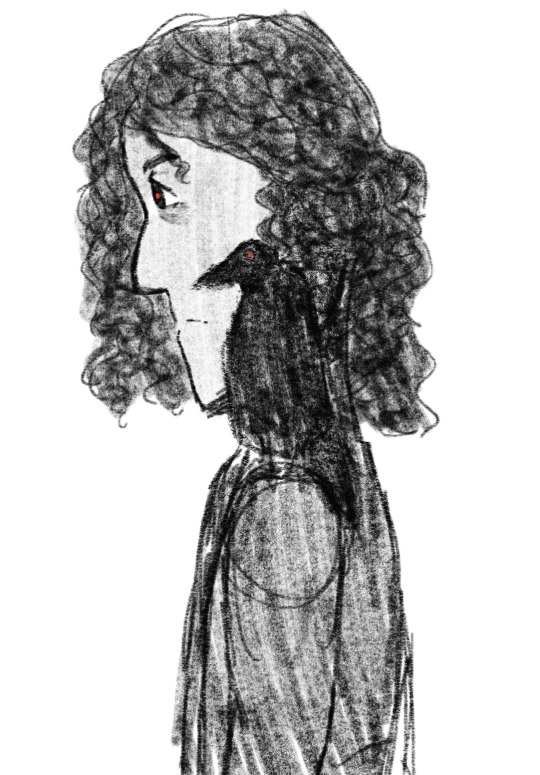
"Jon chewed his lip. The raven flapped its wings at him. “War, war, war, war,” it sang."
#jonsnowfortnightevent2023#jonsnowfortnightevent#once again i wish i had more time#asoiaf#a song of ice and fire#game of thrones#jon snow#valyrian scrolls#book jon snow#mormont's raven#my asoiafarts#my artgeneral
40 notes
·
View notes
Text
#JON SNOW FORTNIGHT EVENT 2023
@asoiafcanonjonsnow
DAY 10: ECHOES OF THE PAST 🗝️📜(2/2) ->
Historical parallels with Medieval bastard Kings.
John I of Portugal
To complete the the previous post of this meta, we're going to dive in the parallels and simmilarities between Jon Snow and John I of Portugal through the following points:
BASTARDY
John I of Portugal also known as John of Avis, was the bastard son of King Peter I of Portugal and Teresa Guille Lourenço, a Galician noblewoman, lady in waiting of Inês de Castro, or according to other sources, the daughter of some Lisbon merchants.
Jon Snow is officially known to be Ned Stark's bastard son, and if we consider R+L=J, he's Prince Rhaegar and Lyanna's son, and as far as we know Jon is still a bastard.
PARENT'S TRAGIC LOVE STORY
John I's father, Peter I of Portugal fell in love with Inês, a lady in waiting and cousin of Constanza Manuel de Villena (Peter's wife).
After Constanza died, they became lovers and they had four children and they wed in secret, but some Portuguese nobles and Peter's father, Afonso IV of Portugal, disliked their relationship because the possible influences of Inês' family. They plotted to kill her, Inés was killed by three of those men and it's said that when Peter became king, he put Inês' corpse in a throne next to him so that the people would swear allegiance to her as queen of Portugal and looked for revenge chasing the ones who killed Inês. John I was born a few years after Inês died when Peter I had an affair with Teresa Lourenço.
Jon's parents, Rhaegar and Lyanna met at the Harrenhal Tourney, in which both participated, Lyanna as the Knight of the Laughing Tree, Aerys sent Rhaegar some men to learn the identity of the mystery knight, so it's likely that Rhaegar figure it out and then crowned her as Queen of Love and Beauty when he won the tourney. They fell in love and run away together, Rhaegar died at the Battle of the Trident during Robert's rebellion and Lyanna died after giving birth to Jon at the Tower of Joy.
BROTHER IS THE KING
After Peter I of Portugal died, he was succeeded by his son with Constanza Manuel de Villena, Ferdinand I, and John held a prominent position during the reign of his brother.
Jon is a brother of the Night's Watch when Robb is proclaimed as King in the North and during his brief reign.
Apart from that it would be argued that Aegon VI fits here too because he's Jon's brother, but Young Griff's identity as Aegon VI is doubtful and he hasn't taken control of Westeros yet.
MILITAR EDUCATION AND CAREER
John was educated by Nuno Freire de Andrade, Master of the Order of Christ, and John became Master of the Order of Avís, one of the most important Orders in Portugal during the Middle Ages, from which he will take his last name.
Jon joined the Night's Watch, which can also be considered a militar order in which chastity is also imposed on its members just like the Order of Avis. Jeor Mormont, Lord Commander of the Night's Watch has been one of Jon's mentors, so just like John, Jon had the leader of a militar order as a mentor, and then became the head of a militar order.
RELATIONSHIPS/LOVE INTERESTS
While John formed part of the Order of Avis, despite vows of chastity, John had two bastard children with Inês Pires when he was a teenager, Beatrice and Afonso, 1st Duke of Braganza.
Jon broke his vows by falling in love and being with Ygritte, even though Jon didn't had children with Ygritte, and Jon has also expressed that he didn't want to have them because of the stigma of being a bastard and the classist Westerosi society.
POLITICAL MATCH MAKER
John was one of the negotiators of the successive marriage projects of his niece and the heiress Beatrice of Portugal, who would end up marrying John I of Castile (Henry II of Castile's son), as a way to seal peace after the Fernandine Wars, in which Ferdinand I tried to overthrow Henry II from the Castilian throne, who became king after killing his legitimate brother Peter I of Castile (who was Ferdinand I's cousin), and was supported by one of Peter I's legitimised bastard children, Constance of Castile.
In the agreements established that each one would independently reign their kingdoms and the offspring of both would inherit Portugal, although if Beatrice died without children, the heirs of her husband would inherit Portugal, and John I of Castile has children from a previous marriage to Eleanor of Aragon (this is important detail for later).
Jon has also arranged a wedding of a familiar during his time as head of the militar institucional, as the Karstarks originated as a cadet branch of the Starks, and there have been intermarriages between the two houses, so we could assume Alys and Jon are distant cousins, such as Alys and Sigorn's wedding.
PROBLEMS OF SUCESSION AND INDEPENDENCE OF THEIR KINGDOMS & THEIR RISE TO KINGSHIP
After the death of Ferdinand I, a succession crisis took place in Portugal between Beatrice, who had no offspring, and the children of Peter I of Portugal with Inés de Castro (who were considered bastards by the Portuguese nobility), and also John revolted at end of 1384 with the support of the commonfolk and the bourgeoisie, and promoted a war to maintain the independence of Portugal, adopting the title of defender of the kingdom, which he achieved by defeating Beatrice and John I of Castile, for which he was crowned king of Portugal, being the first king and founder of the House of Avis.
Due to what happened to John with the fight for the independence of Portugal against another family member, it is most likely that in TWOW when Jon arrives in Winterfell the inheritance problem between the Starklings will have to be solved, and with Robb's will and his position as the older brother and being the one with political experience, supported by the Free Folk, the Mountain Clans and some Northern Noble Houses like the recently created House of Thenn, formed by Alys and Sigorn, Jon will be named king in the North breaking relations with the Iron Throne that is under the control of the Lannisters and the North will be (for the moment) independent again. In addition, the matter of Beatrice and her husband John I of Castile reminds me a bit of the marriage of Sansa and Tyrion, being Tywin's initial plan to get the North under the rule of the Lannisters, although that did not work and the best method was having the Boltons at Winterfell. Plus both Tyrion and John I of Castile have lions in their sigils, although the Castilian lion is purple (or in some media, red) and the Lannister one is golden.
ALLIANCES, MARRIAGE & OFFSPRING/POSSIBLE MARRIAGE (SPECULATIONS)
Like his brother Ferdinand I, John supported Constance's cause, allying with her against John I of Castile, but they were defeated and Constance did not get the Castilian throne, her daughter Catherine of Lancaster married John I of Castile's son, Henry III, and their son was John II of Castile, thus uniting the two lines of succession of Alfonso XI of Castile.
As well as Peter I of Castile's two eldest surviving daughters married two of Edward III of England's sons (Constance married John of Gaunt, 1st Duke of Lancaster and Isabella married Edmund of Langley, 1st Duke of York), John I of Portugal married Philippa of Lancaster, John of Gaunt's eldest daughter with Blanche of Lancaster, and they had a loving marriage and eight children: Blanche, Afonso, Edward I of Portugal, Peter, Henry, Isabella, John and Ferdinand.
Edward was a poet and writer, his more important books were, on good governance,'The Loyal Counselor', 'Book of Councils', 'Response, being princes, to the infant D. Ferdinand about some complaints he had of his father'; on sports and horsemanship, with educational connotations, 'Teaching book about riding well in any saddle' and "Regiment to learn to play weapons'.
It's very likely that Jon will need to make more alliances to stablish his position as King in The North and preparing for the War for the Dawn and fight against the Others, and one way to do it it would be marrying someone with a prominent influence and a big army.
And although Dany hasn't landed on Westeros yet, due to her army and her influence as queen claimant to the Iron Throne, could be a good ally, and Dany would like to help due to her care for people who are needed, so probably Jon and Dany would join forces and eventually they could fall in love, marry and rule Westeros together.
Plus, if Jon ans Dany have children, one of them could be a poet like Edward I or a music composer and a bookworm like Rhaegar.
CUNNING/KNOWLEDGE
Contemporary writers state John that his position as a master of a religious military order made him an exceptionally learned king for the Middle Ages. His love for knowledge and culture was passed down to his children, who are collectively referred to by Portuguese historians as the illustrious generation, for example, Edward I the Eloquent and Peter were considered as two of the most learned princes of their time, and Henry the Sailor invested heavily in science and in the development of nautical activities.
Although Jon is often seen as a warrior, he has shown interest on knowledge and books too and he has been showing competences and skills for being a good leader and he's cunning good at politics and a good administrator, as he has been proving during his time as Lord Commander of the Night's Watch.
DRAGON IMAGERY
John I of Portugal's sigil has some elements that make me link him with Jon, his emblem has a crest with a dragon, which was usually used in the heraldry of the Portuguese Royal family, in which a dragon appears in the Royal crest or two green dragons as the supports of coat of arms, which makes me think of Rhaegal, a green dragon, who was named after Rhaegar and most likely Jon is its dragonrider.
#jonsnowfortnightevent2023#jonsnowfortnightevent#jon snow#meta#canonjonsnow#canonjon#jon meta#asoiaf meta#day 10#echoes of the past#historical parallels#john i of portugal#João I#medieval bastard kings
30 notes
·
View notes
Text
Jon Snow Fortnight day 6: Shadows of Heroism
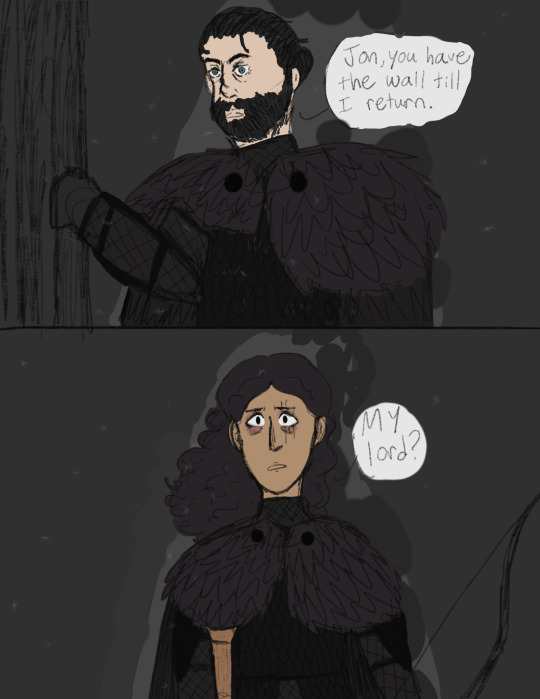
The beginning of my favorite scene from my favorite book, and its literally in the *shadows* and heroic as hell. Jon literally saved hundreds of lives and did so without the thank of the kingdoms, without a tourney, in the black of the night, while freshly emerging from physical and emotional trauma. Truly so incredible and horrifying.
Asos; chp 55
#jonsnowfortnightevent2023#jonsnowfortnightevent#jon snow#asoiaf#a song of ice and fire#game of thrones#valyrian scrolls#donal noye#my asoiafarts#my artgeneral
46 notes
·
View notes
Text
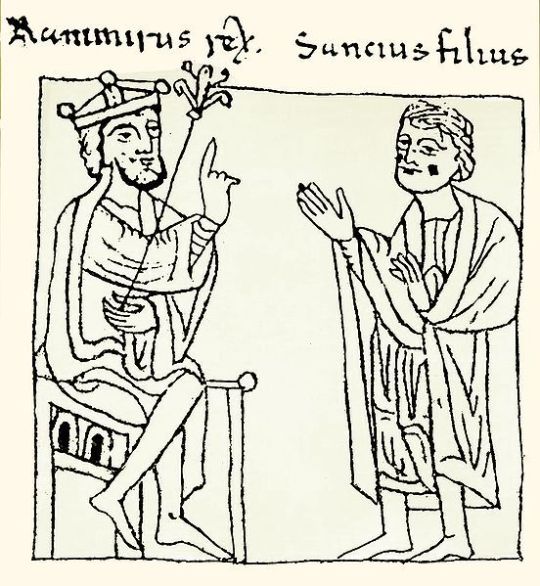



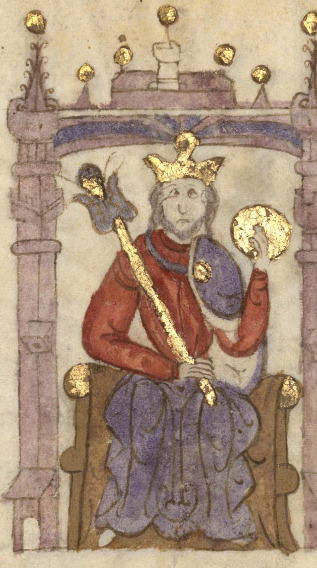

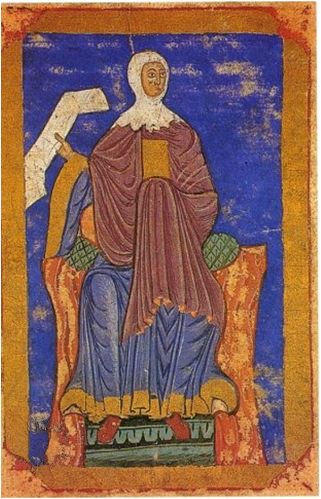

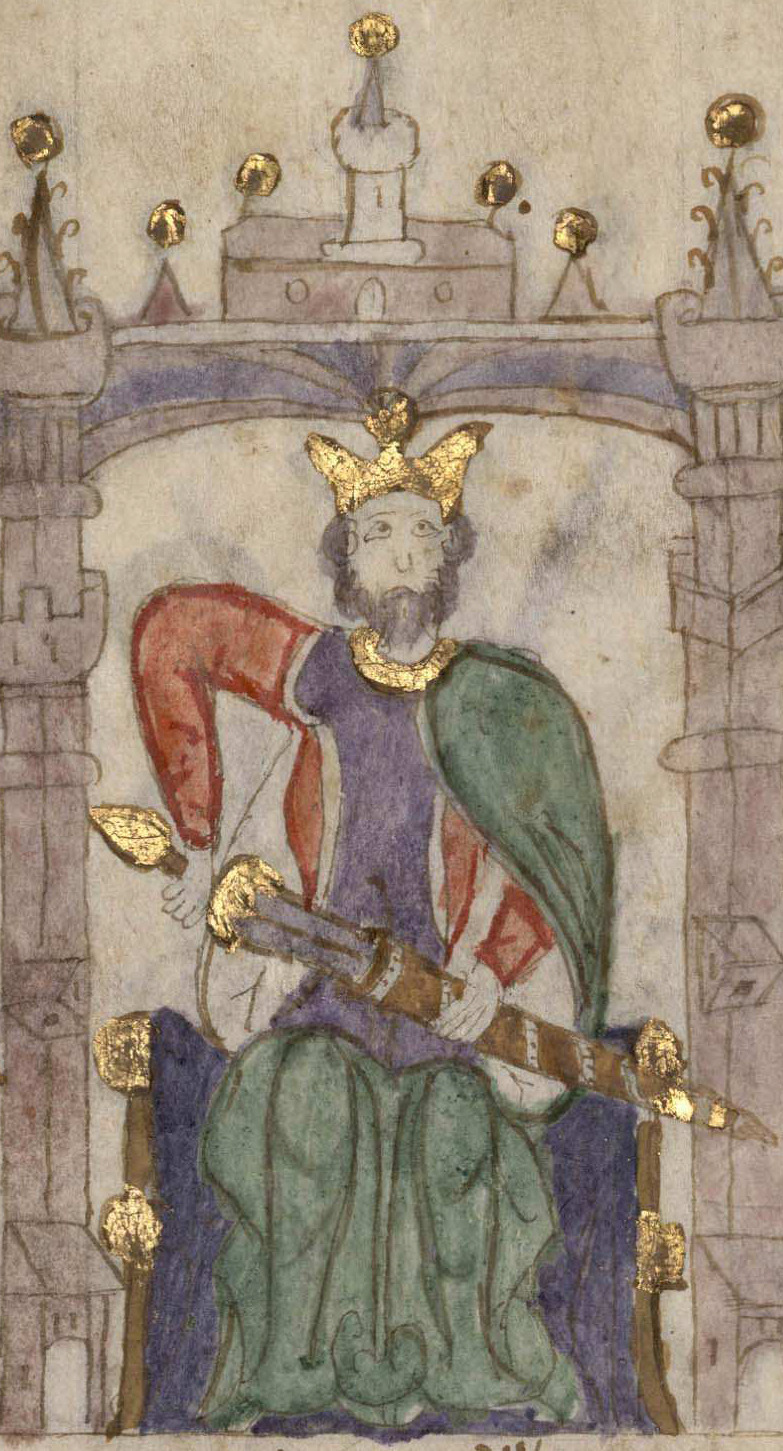

The Bastard Kings and their families
This is series of posts are complementary to this historical parallels post from the JON SNOW FORTNIGHT EVENT, and it's purpouse to discover the lives of medieval bastard kings, and the following posts are meant to collect portraits of those kings and their close relatives.
In many cases it's difficult to find contemporary art of their period, so some of the portrayals are subsequent.
1) Ramiro I of Aragon (1006/7- 1063), son of Sancho III of Pamplona and Sancha de Aybar; with his son Sancho I of Aragon & V of Pamplona (1043-1094)
2) His wife, Ermesinda of Foix (1015 - 1049), mother of Sancho I of Aragon. Daughter of Bernard Roger de Foix and his wife Garsenda de Bigorra; and Sancha of Aragon (1045-1097), daughter of Ramiro I and Ermesinda
3) His father, Sancho III of Pamplona (992/96-1035), son of García II of Pamplona and Jimena Fernández
4) His brother, García III of Pamplona (1012-1054), son of Sancho III of Pamplona and his wife Muniadona of Castile
5) His nephew, Sancho IV of Pamplona (1039- 1076), son of García III of Pamplona and his wife Placencia of Normandy
6) His brother, Ferdinand I of Leon (1016- 1065), son of Sancho III of Pamplona and his wife Muniadona of Castile
7) His niece, Urraca of Zamora (1033-1101), daughter of Ferdinand I of Leon and Sancha of Leon
8) His niece, Elvira of Toro (1038-1099), daughter of Ferdinand I of Leon and Sancha of Leon
9) Sancho II of Castile (1038/1039-1072), son of Ferdinand I of Leon and Sancha of Leon
10) Alfonso VI of Leon (1040/1041-1109), son of Ferdinand I of Leon and Sancha of Leon
#jonsnowfortnightevent#jonsnowfortnightevent2023#asoiaf#a song of ice and fire#day 10#echoes of the past#historical parallels#medieval bastard kings#ramiro i of aragon#sancho i of aragon#sancha of aragon#ermesinda of foix#sancho iii of pamplona#garcía iii of pamplona#sancho iv of pamplona#ferdinand i of leon#urraca of zamora#elvira of toro#sancho ii of castile#alfonso vi of leon#bastard kings and their families#canonjonsnow
26 notes
·
View notes
Text

#JONSNOWFORTNIGHTEVENT2023
@asoiafcanonjonsnow
Day 4 - Unsung Connections 🔍🧩: Bran & Sansa Stark - Bird imagery
Sansa Stark - Little Bird
Sandor Clegane stopped suddenly in the middle of a dark and empty field. She had no choice but to stop beside him. "Some septa trained you well. You're like one of those birds from the Summer Isles, aren't you? A pretty little talking bird, repeating all the pretty little words they taught you to recite.
Sansa II, A Game of Thrones
Jon Snow - Crow/Raven/Lord Crow
Ygritte rode just behind him. In front was Longspear Ryk. The Lord of Bones had made the two of them his guards. "If the crow flies, I'll boil your bones as well," he warned them when they had set out, smiling through the crooked teeth of the giant's skull he wore for a helm.
Ygritte hooted at him. "You want to guard him? If you want us to do it, leave us be and we'll do it."
Jon I, A Storm of Swords
That is a lesson I would sooner they never learned. Jon peeled the glove off his burned hand, put two fingers in his mouth, and whistled. Ghost came racing from the gate. Tormund's horse shied so hard that the wildling almost lost his saddle. "Naught to be feared?" Jon said. "Ghost, stay."
"You are a black-hearted bastard, Lord Crow." Tormund Horn-Blower lifted his own warhorn to his lips. The sound of it echoed off the ice like rolling thunder, and the first of the free folk began to stream toward the gate.
Jon XII, A Dance with Dragons
Bran Stark - Raven/ Three-eyed crow
"You will never walk again," the three-eyed crow had promised, "but you will fly." Sometimes the sound of song would drift up from someplace far below. The children of the forest, Old Nan would have called the singers, but those who sing the song of earth was their own name for themselves, in the True Tongue that no human man could speak. The ravens could speak it, though. Their small black eyes were full of secrets, and they would caw at him and peck his skin when they heard the songs.
Bran III, A Dance with Dragons
#jonsnowfortnightevent#jonsnowfortnightevent2023#jon snow#canonjonsnow#sansa stark#bran stark#unsung connections#day 4#bird imagery#my doodles#asoiaf fanart#fanart#my art
22 notes
·
View notes
Text
Day 1 of Jon Snow fortnight: The Humble Champion ficlet
Beneath the shadow of the Wall, a laborer toils.
Of course, Jon isn’t usually a laborer. Usually around now he’d be walking the ramparts with his brothers in black, checking ballistas and defenses for cracks and restocking oil. But today Kegs had caught a vicious fever, and was quarantined in Hardin’s tower for fear of spreading his sickness amongst the crows. And Jon would be damned if a single builder couldn’t attend to his duties- there was much and more, always, to be done.
“Lord Crow! What the hell are you doing?” Tormund stalks over from his seat, one fist full of dice and the other full of a tankard.
“I could ask you the same. Don’t you have some delegating to do?” Jon spares him a glance before bringing the hammer down, driving the rest of the nail into the log. He’s been working on a palisade for the past hour- a palisade that was due to be finished a day ago.
“To hell with delegating, Jon. The name’s not Tormund Delegator-Slayer.” The wildling thinks for a moment. “HAR! Actually, it has a good ring t’it. I’ll add it to my list.”
“...Right.” The lord commander wipes the sweat from his brow, which had begun to turn cold and hard.
Pounding a hammer for hours on end worked different muscles than sword fighting, and the strain in his shoulders reminded him of his tireless training as a recruit. The memory and feeling was as pleasant as a warm gust of wind… but he could only enjoy it for a moment before Tormund Talks-Too-Much interrupted.
“Come have a roll with us, lad. Take a break!”
“Sorry, Tormund. These palisades were supposed to be done a day ago, and all the builders are delegated to other roles.”
“You’re the Lord Commander. I’m sure you could find one gods-damned person to drive a fuckin’ nail.” Jon shakes his head and readies the next nail.
Tormund sighs, and claps a giant hand on Jon’s shoulder.
“Lad. The singers won’t sing songs for no builders- they’ll sing for Lord Commanders, and warriors, though. And part of being a warrior is a bit o’ gambling.”
“Someone must do it. And I never much cared for song anyways.” Hopefully that’ll convince his friend to leave him alone.
Tormund considers this, leaning against Jon’s unfinished palisade, causing the wall to tilt awkwardly to the side. Jon has to steady the icy wood with his bare hands, contracting a splinter in the process. Damnit. Wonder how many splinters Lord Commanders Mormont or Qorgyle had in their services.
“That seems to be your philosophy for quite a few situations.” Tormund raises a bushy eyebrow. “Lord Crow.” He shifts off the palisade and mock bows, strutting back to his friends.
Jon watches him go for only a moment before returning to work- someone has to do it, anyways.
The Lord Commander toils beneath the shadow of the Wall.
#jonsnowfortnightevent2023#canonjonsnow#book jon snow#asoiaf#a song of ice and fire#game of thrones#jon snow#valyrian scrolls#tormund giantsbane#fanfiction#i may or may not xpost to ao3#jonsnowfortnightevent
19 notes
·
View notes
Text



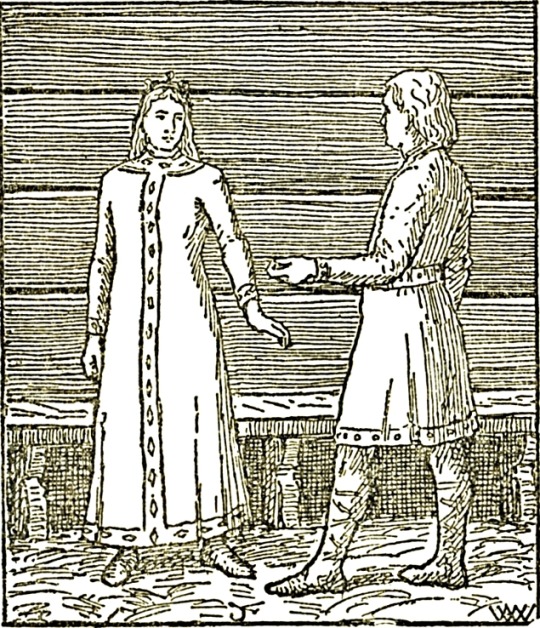



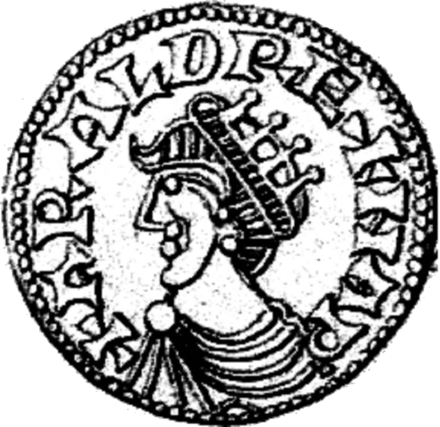
The Bastard Kings and their families
This is series of posts are complementary to this historical parallels post from the JON SNOW FORTNIGHT EVENT, and it's purpouse to discover the lives of medieval bastard kings, and the following posts are meant to collect portraits of those kings and their close relatives.
In many cases it's difficult to find contemporary art of their period, so some of the portrayals are subsequent.
1) Magnus I of Norway (c. 1015 – 1066), son of Olaf II of Norway and Alfhild
2) His father, Olaf II of Norway (c. 995 – 1030), son of Harald Grenske and his wife Åsta Gudbrandsdatter
3) His great-great-grandfather, Harald Fairhair (c. 850 – c. 932), son of Halfdan the Black and his wife Ragnhild Sigurdsdatter
4) His daughter, Ragnhild Magnusdatter; with her husband Haakon Ivarsson
5) His sister, Wulfhild of Norway (1020 – 1071), daughter of Olaf II of Norway and his wife Astrid Olofsdotter
6) His brother-in-law, Ordulf of Saxony (c. 1022 – 1072), son of Bernard II of Saxony and his wife Eilika of Schweinfurt
7) His nephew, Magnus of Saxony (c. 1045 –1106), son of Wulfhild of Norway and Ordulf of Saxony
8) His uncle, Harald III of Norway ( c. 1015 – 1066), son of Sigurd Syr and Åsta Gudbrandsdatter
#jonsnowfortnightevent2023#jonsnowfortnightevent#day 10#echoes of the past#historical parallels#medieval bastard kings#asoiaf#a song of ice and fire#magnus i of norway#olaf ii of norway#harald i of norway#harald fairhair#wulfhild of norway#magnus of saxony#ordulf of saxony#bastard kings and their families#håkon ivarsson#ragnhild of norway#harald iii of norway#harald hardrada#magnus the good#canonjonsnow
11 notes
·
View notes
Text




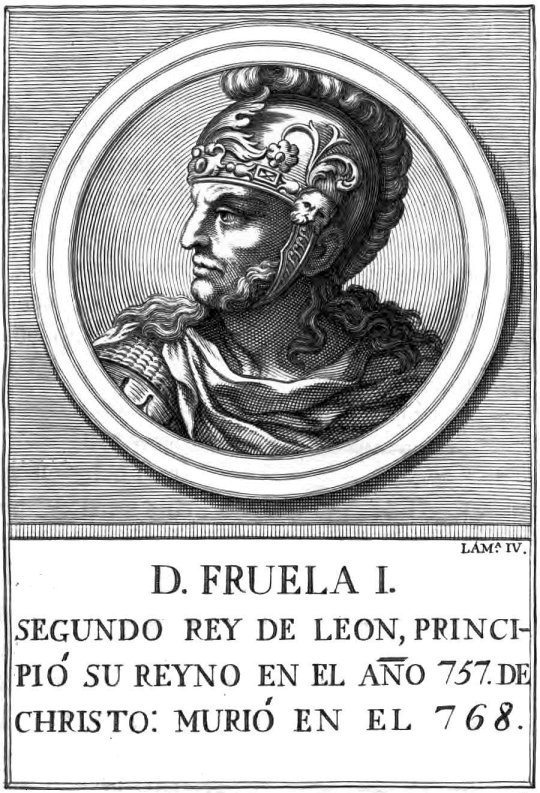
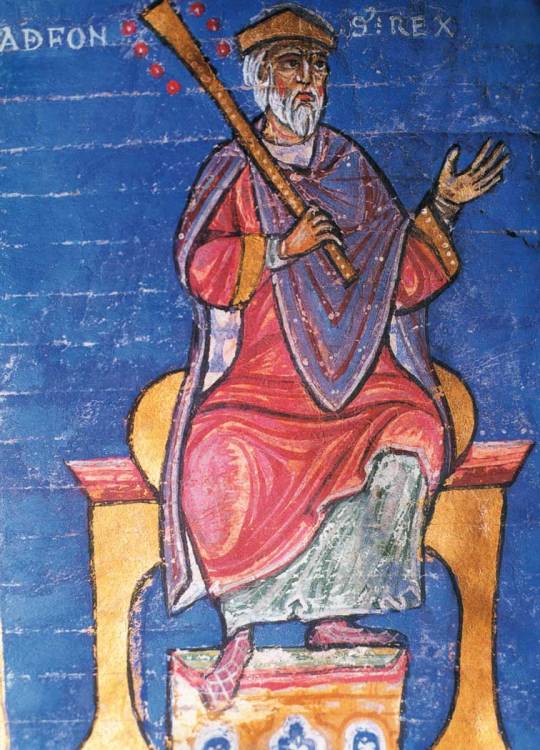



The Bastard Kings and their families (1/?)
This is series of posts are complementary to this historical parallels post from the JON SNOW FORTNIGHT EVENT, and it's purpouse to discover the lives of medieval bastard kings, and the following posts are meant to collect portraits of those kings and their close relatives.
In many cases it's difficult to find contemporary art of their period, so some of the portrayals are subsequent.
Let's start with Mauregato I of Asturias:
1) Mauregato I of Asturias (719-m. 788), son of Alfonso I and Sisalda
2) His father, Alfonso I of Asturias (693-757), son of Pedro de Cantabria
3) His brother, Vimarano (725-765), son of Alfonso and his wife Ermesinda
4) His sister, Adosinda (728-c.785) daughter of Alfonso and his wife Ermesinda; with her husband Silo I of Asturias
5) His brother, Fruela I of Asturias (722-768) son of Alfonso and his wife Ermesinda
6) His nephew, Alfonso II of Asturias (c. 760-842), son of Fruela I and his wife Munia of Alava
7) His uncle, Fruela de Cantabria (d. 758), son of Pedro de Cantabria.
8) His cousin, Aurelio I of Asturias (c. 740-774), son of Fruela de Cantabria
9) His cousin, Bermudo I of Asturias (c. 750-797), son of Fruela de Cantabria
#jonsnowfortnightevent2023#jonsnowfortnightevent#asoiaf#a song of ice and fire#day 10#echoes of the past#historical parallels#medieval bastard kings#mauregato i of asturias#alfonso i of asturias#vimarano of asturias#adosinda of asturias#silo i of asturias#fruela i of asturias#alfonso ii of asturias#fruela de cantabria#aurelio i of asturias#bermudo i of asturias#some of the portraits of this section could work as art references for fanarts#bastard kings and their families#canonjonsnow
9 notes
·
View notes